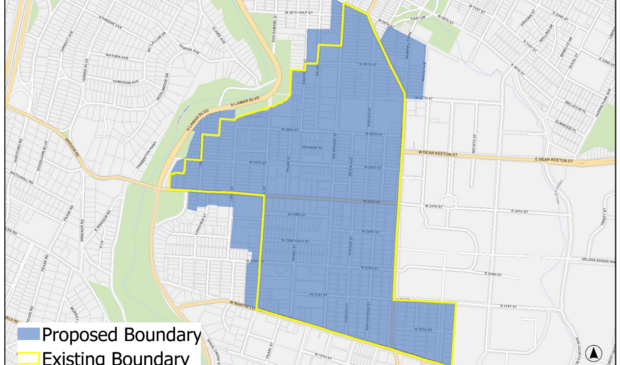Planning Commissioners and public weigh in on West Campus zoning updates with support… and some reservations
Tuesday, May 20, 2025 by
Miles Wall Planning Commissioners and the public weighed in on planned changes to a West Campus zoning plan during a marathon public comment session on May 13.
Conducted as part of a hearing at the Planning Commission about the updates, the comments were mostly supportive. It was capped off by commissioners’ unanimous votes to recommend the plan to City Council with some amendments.
The Austin Monitor has previously reported on the details of the plan, which would reorganize the University Neighborhood Overlay (UNO) and expand many of its measures with the goal of increasing density and affordability in the blocks west of UT’s downtown campus.
Supporters of the the planned changes, including several commissioners who spoke in favor of the plan, hailed it as a necessary step forward for the university community and the city at large, while others criticized the plan for not going far enough, or suggested relatively small tweaks.
“This isn’t a zoning decision, it’s a decision about who gets to live in the city and who gets pushed out,” said Mario Perez, who spoke in favor of the plan during the meeting. Perez, who identified himself as a “proud University of Texas student,” a resident of West Campus and an amateur beekeeper, offered an offbeat analogy.
“A hive only thrives when every bee has a place. You can’t build a colony without making room for new workers,” he said. “Austin is no different. Without space for new students, without policies that welcome new residents, the whole system starts to break down.”
Adam Stephens, who identified himself as chair of the Central Austin Neighborhood Planning Advisory Committee, also spoke in favor of the plan at the meeting. He described CANPAC as the “original authors” of the overlay plan first put into place in 2003.
“We feel that it makes sense and that it follows the logic of the original plan,” Stephens said, further stating that the committee endorsed the maximum height map changes included in the plan as “carefully drawn… to support the historic neighborhoods that surround the core of West Campus.”
Speakers who said the plan didn’t go far enough or needed refinement pointed at issues like environmental impacts, public safety, measures to support single-stair buildings and tenants’ rights issues.
Grant Gilker, the chair of West Campus student housing cooperative College Houses, spoke in favor of the plan on behalf of a coalition of his organization, the Wheatsville Food Co-op and ICC Austin, but mixed praise for the plan with a critique. He said that neither the plan or a proposed amendment from the Planning Commission sufficiently address lengthy pre-lease periods.
Student advocates see these periods as an exploitative tactic that locks students into leases that become effective long before they arrive on campus, for apartments that are sometimes in poor condition or, in some brand-new developments still under construction, actually unfinished. The Planning Commission’s amendment would reduce the maximum allowable time that a lease could be effective before move-in to 150 days, or about five months.
The Austin Monitor and reporting partner KUT have previously reported on the advocacy of the University Tenants’ Union, which Gilker has also worked with, on that and other issues in West Campus.
Gilker said that lengthy pre-lease agreements not only hurt tenants, but also co-op organizations like College Houses. He explained co-ops need to wait until affordability data is released before they can set rates, making it harder to compete with private landlords if they can lock in tenants months early.
“It’s not just a tenants’ rights issue,” Gilker said. “It also allows (housing coops) to compete in a fair marketplace.”
Christian Tschoepe, who also spoke generally in favor of the plan, asked that it be modified to allow for single-stair buildings to be built in the overlay area by lowering a requirement for minimum lot size for multi-family buildings from 8,000 square feet to 2,500, which he said he believed was an “oversight” in the current plan.
“We just legalized single-stair buildings, but can we build them? And where can we build them if we can?” Tschoepe asked, rhetorically. “We need to lower (minimum) lot size to allow for small-lot, single-stair buildings.”
Tschoepe went on to show a mockup of a single-stair building he would like to build with several friends at an address on Salado Street.
You're a community leader
And we’re honored you look to us for serious, in-depth news. You know a strong community needs local and dedicated watchdog reporting. We’re here for you and that won’t change. Now will you take the powerful next step and support our nonprofit news organization?






